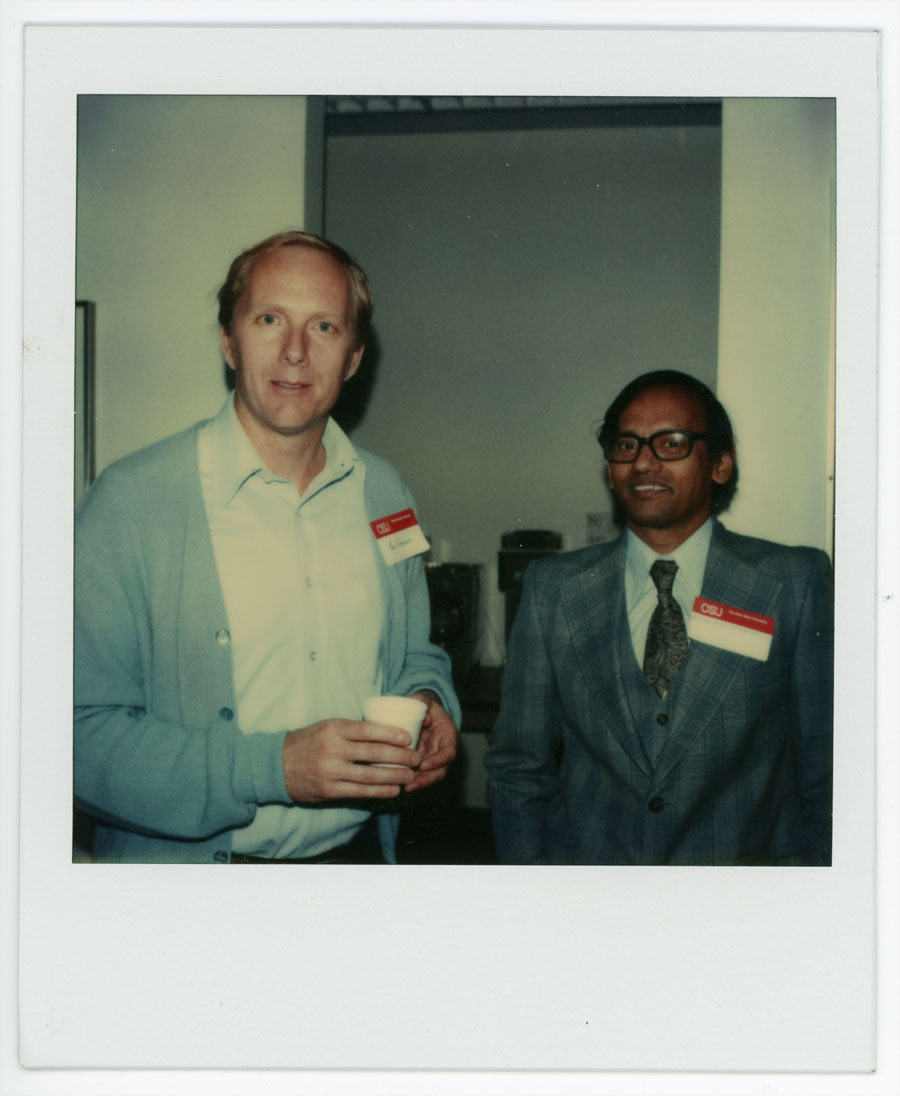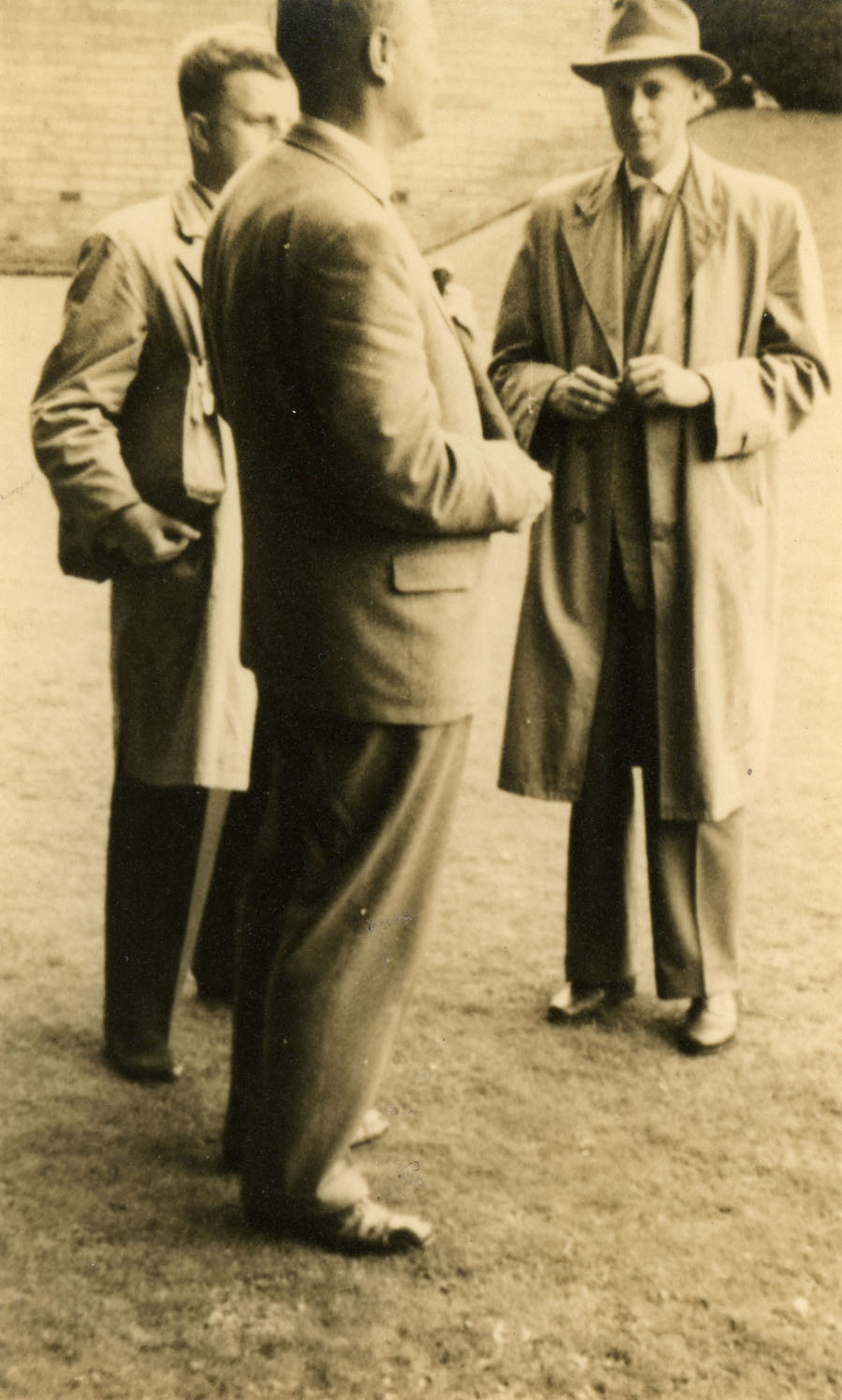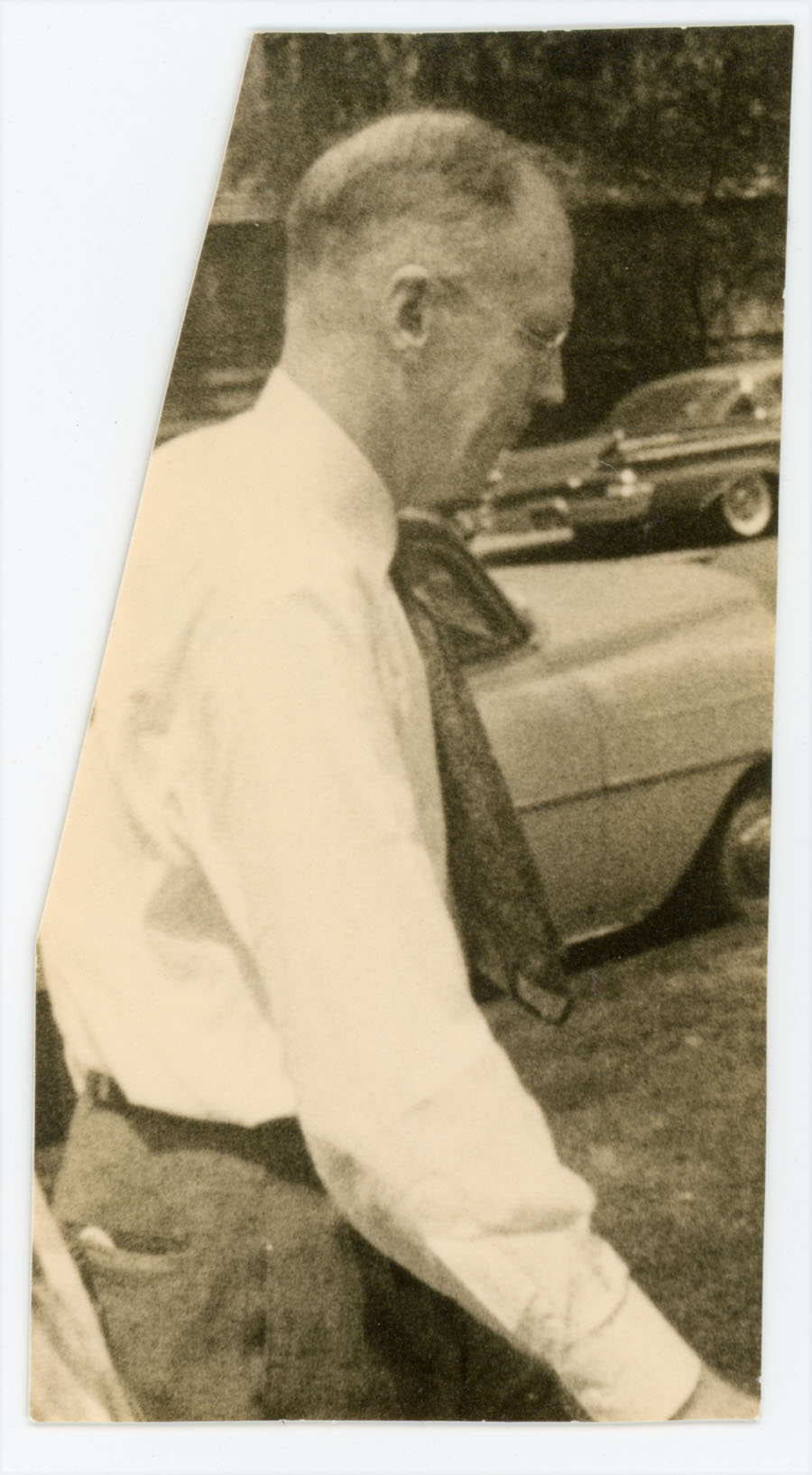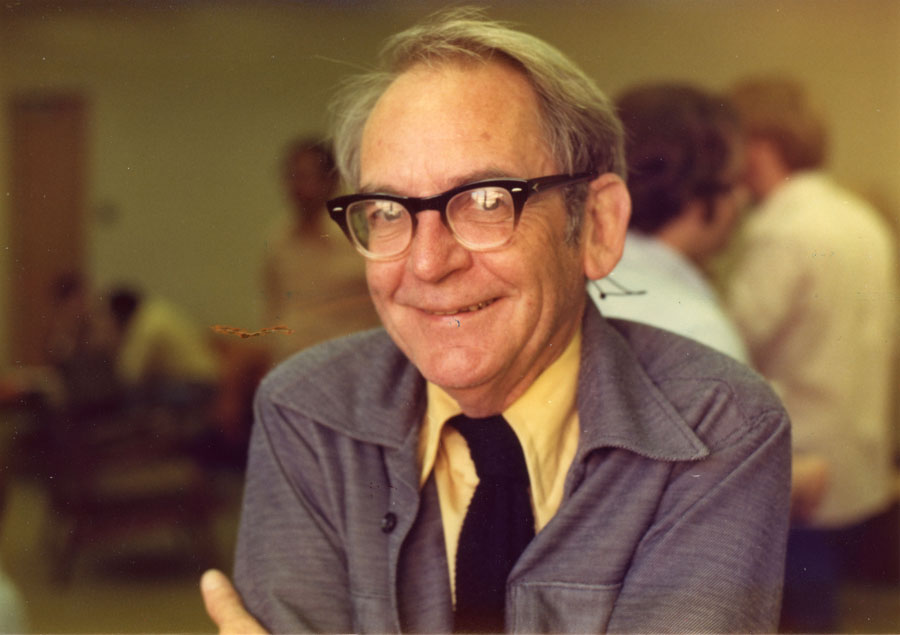- About MAA
- Membership
- MAA Publications
- Periodicals
- Blogs
- MAA Book Series
- MAA Press (an imprint of the AMS)
- MAA Notes
- MAA Reviews
- Mathematical Communication
- Information for Libraries
- Author Resources
- Advertise with MAA
- Meetings
- Competitions
- Programs
- Communities
- MAA Sections
- SIGMAA
- MAA Connect
- Students
- MAA Awards
- Awards Booklets
- Writing Awards
- Teaching Awards
- Service Awards
- Research Awards
- Lecture Awards
- Putnam Competition Individual and Team Winners
- D. E. Shaw Group AMC 8 Awards & Certificates
- Maryam Mirzakhani AMC 10 A Awards & Certificates
- Two Sigma AMC 10 B Awards & Certificates
- Jane Street AMC 12 A Awards & Certificates
- Akamai AMC 12 B Awards & Certificates
- High School Teachers
- News
You are here
Who's That Mathematician? Paul R. Halmos Collection - Page 18
For more information about Paul R. Halmos (1916-2006) and about the Paul R. Halmos Photograph Collection, please see the introduction to this article on page 1. A new page featuring six photographs will be posted at the start of each week during 2012.

Halmos photographed Ronald Graham and Fan Chung Graham at the AMS-MAA Joint Summer Meetings in Laramie, Wyoming, in August of 1985. The Grahams have provided a link to a companion photo to this one that also appeared in Halmos' I Have a Photographic Memory (AMS, 1987).
Ron Graham earned his Ph.D. in 1962 from the University of California, Berkeley, with the dissertation “On Finite Sums of Rational Numbers.” He became a researcher at Bell Telephone Laboratories (Bell Labs), serving as Director of Information Sciences from 1962 to 1995 and then Chief Scientist until 1999, when he accepted the Jacobs Chair of Computer and Information Science at the University of California, San Diego. During the 1960s, perhaps under the influence of Paul Erdös, whom he met at a number theory conference in 1963, Graham gradually expanded his interests beyond number theory to various areas of discrete mathematics, and, by the 1970s, was developing new disciplines, such as Ramsey theory (suggested by work of Frank Ramsey in 1930). Graham served as AMS president in 1993-94 and MAA President in 2003-04. (Sources: MacTutor Archive, AMS Presidents, MAA Presidents)
Fan Chung Graham earned her Ph.D. in 1974 from the University of Pennsylvania under advisor Herbert Wilf with a dissertation on “Ramsey numbers in multi-colors and combinatorial designs.” That year, she joined the Mathematical Foundations of Computing Department at Bell Labs, publishing papers on Ramsey theory and graph theory. She was promoted to Research Manager at Bellcore in 1983 and to Division Manager of Mathematics, Information Sciences, and Operations Research in 1986. In 1994, she left Bell Labs to spend 1994-95 at the Institute for Advanced Study in Princeton, New Jersey, and 1995-98 at the University of Pennsylvania. In 1998, she became Professor of Mathematics, Computer Science, and Engineering at the University of California, San Diego, where she initially held the Akami Chair in Internet Mathematics and now holds the Paul Erdös Chair in Combinatorics. (Sources: MacTutor Archive, UC San Diego Department of Mathematics)

Ron Graham and Dwijendra (Dijen) Ray-Chaudhuri were photographed in Columbus, Ohio, in October of 1979. Ray-Chaudhuri joined the mathematics faculty at Ohio State University in Columbus in 1966, and is now Professor Emeritus of Mathematics at OSU. He earned his Ph.D. in 1959 from the University of North Carolina at Chapel Hill with a dissertation on incomplete block designs and error correcting binary codes. In 1968, he and Richard Wilson, now at Caltech, solved the general case of Kirkman’s Schoolgirl Problem (Ohio State University; for more information about the problem, see the biography of Thomas Kirkman at the MacTutor Archive). Ray-Chaudhuri has advised at least 31 Ph.D. students at Ohio State (Mathematics Genealogy Project).

Halmos photographed, left to right, complex analysts Reinhold Remmert, Karl Stein, and Hans Grauert in September of 1958.
Reinhold Remmert earned his Ph.D. in complex variables in 1954 from Wesfälische Wilhelms-Universität Münster. His, Stein’s, and Grauert’s Doktorvater (Ph.D. advisor) was Heinrich Behnke (1898-1979). Remmert's career has included advising at least 24 Ph.D. students at Münster, Erlangen-Nürnberg, and Göttingen from 1956 to 1983 (Mathematics Genealogy Project). He is currently Professor Emeritus of Mathematics at Wesfälische Wilhelms-Universität Münster.
Karl Stein (1913-2000) earned his Ph.D. in complex variables in 1937 from Wesfälische Wilhelms-Universität Münster, and spent most of his career at Ludwig-Maximilians-Universität München, where he advised at least 28 Ph.D. students from 1956 to 1982 (Mathematics Genealogy Project). He wrote at least five papers with his Ph.D. advisor, Behnke, from 1949 to 1954 (MacTutor Archive: Behnke).
Hans Grauert (1930-2011) earned his Ph.D. in complex variables in 1954 from Wesfälische Wilhelms-Universität Münster. He and Paul Halmos both spent 1957-58 at the Institute for Advanced Study in Princeton, New Jersey; in fact, Grauert spent part of 1959 there as well. Grauert and Halmos both traveled to the International Congress of Mathematicians in Edinburgh, Scotland, in August of 1958, with Grauert giving a 30-minute address, and it is possible that this photograph was taken in Edinburgh. In 1959, Grauert was appointed to the mathematics faculty at Georg-August-Universität Göttingen, where he advised at least 44 Ph.D. students from 1961 to 1996 (Sources: Mathematics Genealogy Project, MacTutor Archive, Institute for Advanced Study).

Lawrence Graves (1896-1973) was photographed by Halmos, probably in Chicago, in August of 1960. At the time, both Graves and Halmos were faculty members at the University of Chicago. Graves earned his Ph.D. in calculus of variations in 1924 from the University of Chicago under advisor Gilbert Ames Bliss. After spending two years at Harvard on a National Research Fellowship, he returned to the University of Chicago in 1926 and spent the rest of his career there, retiring in 1961. He advised at least 18 Ph.D. students from 1930 to 1952, including Edward McShane, for whom he served as second advisor to Bliss, in 1930; Herman Goldstine in 1936; and Robert Bartle, who appears in a photo on page 4 of this collection, in 1951. The second edition of Graves’ Theory of Functions of Real Variables, originally published in 1956 (first edition in 1946), is now available from Dover Books. According to its website, the University of Chicago Mathematics Department annually awards the Lawrence and Josephine Graves Prize for teaching. (Sources: Mathematics Genealogy Project and "Lawrence Murray Graves, 1896-1973," by H. H. Goldstine and E. J. McShane, 3pp., date unknown, available from University of Chicago Mathematics Department)

Halmos photographed Mary Gray in Irvine, California, on March 27, 1966. Gray remembers that she and her husband Alfred Gray, a differential geometer then at the University of California, Berkeley, attended a mathematics meeting in Irvine in March of 1966, and that she and Paul Halmos first met at this meeting.
Mary Gray earned her Ph.D. in 1964 from the University of Kansas with the dissertation “Radical Subcategories.” She was a professor at California State University, Hayward (now East Bay), at the time this photo was taken and moved to American University in Washington, D.C., in 1968, where she is Professor of Mathematics and Statistics. After publishing the book A Radical Approach to Algebra in 1970, Gray turned from ring theory to applied statistics and mathematics education in order, she recalls, "to have a more immediate effect on the real world." Today, she is a statistician (and lawyer) whose favorite applications of statistics include human rights, economic equity, legal issues, and education. She helped found the Association for Women in Mathematics in 1971 and served as its first president from 1971 to 1973. She has been nationally recognized for her mentoring of aspiring statisticians and mathematicians, most recently in 2012 by the Committee of Presidents of Statistical Societies, and also by the American Association for the Advancement of Science in 1994. As of June 1, 2012, Gray has advised 34 Ph.D. students at American University. (Sources: MacTutor Archive, American University, American University Department of Mathematics and Statistics)

Halmos photographed John W. Green (1914-2000) in 1977. At the time, Green was Professor of Mathematics at the University of California, Los Angeles (UCLA). After receiving bachelors and masters degrees from what was then the Rice Institute and is now Rice University in Houston, Texas, John Willie Green earned his Ph.D. from the University of California, Berkeley, in 1938, with a dissertation on harmonic functions. He then spent one year at Harvard University (1938-39) and six years at the University of Rochester (1939-1945 with leave assignment at the Ballistics Research Laboratory, Aberdeen Proving Ground, Maryland, during World War II). In 1945, he moved to UCLA, where he spent the rest of his career. He was active in American Mathematical Society governance, most notably serving as AMS Secretary from 1957 to 1967. We thank Nathaniel Grossman, Professor Emeritus of Mathematics at UCLA, who was Green's colleague from 1966 onward, for identifying Green for us and pointing us toward the University of California's memorial article about him cited here. (Source: John W. Green Memorial at calisphere)
For an introduction to this article and to the Paul R. Halmos Photograph Collection, please see page 1. Watch for a new page featuring six new photographs each week during 2012.
Regarding sources for this page: Information for which a source is not given either appeared on the reverse side of the photograph or was obtained from various sources during 2011-12 by archivist Carol Mead of the Archives of American Mathematics, Dolph Briscoe Center for American History, University of Texas, Austin.
Janet Beery (University of Redlands) and Carol Mead (Archives of American Mathematics, University of Texas, Austin), "Who's That Mathematician? Paul R. Halmos Collection - Page 18," Convergence (January 2012), DOI:10.4169/loci003801




